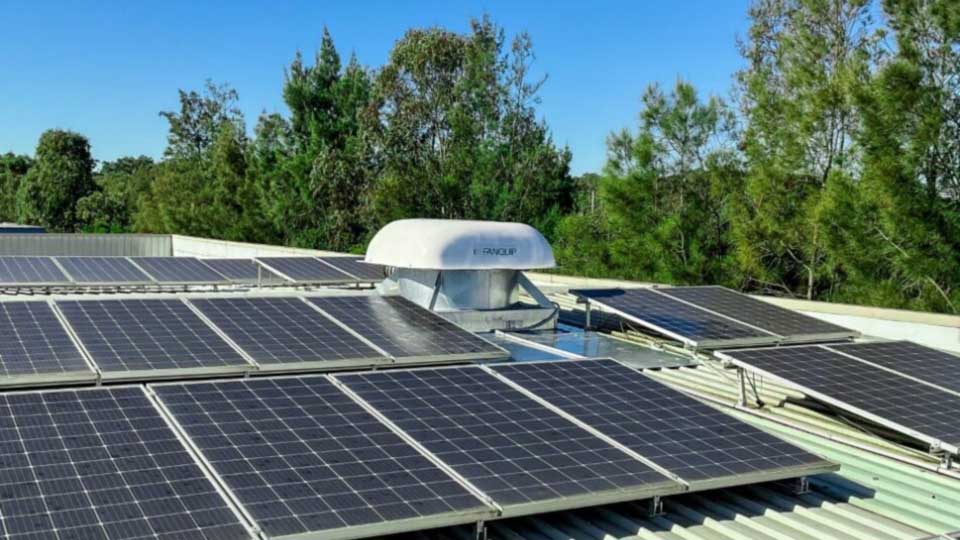Almost 20% of the Australian population has an allergic disease an according to the Australasian Society of Clinical Immunology and Allergy, the number of sufferers will increase by 70% by the year 2050.
How can you reduce allergens in the air with ventilation?
Keep reading to learn why allergens are detrimental to your health, and how you can reduce their impact with ventilation.
How do allergies affect your health?
If you suffer from allergies, you suffer from an overactive immune response to a harmless substance. The hypersensitive reaction can cause the release of histamines and other chemicals, which will lead to allergic symptoms.
Here are some of the primary causes of allergies:
- Sensitisation – if you are exposed to an allergen, your immune system responds to it as a threat, releasing antibodies called immunoglobin E.
- Re-exposure – if you are exposed to the same allergen more than once, this will cause the same antibodies to bind, producing cells called mast cells and basophils.
- Degranulation – once the allergen binding occurs, these cells release histamines, leukotrienes, and other inflammatory molecules.
- Inflammatory response – the histamines produced will lead to dilation of the blood vessels, causing redness and swellling. Leukortines will also cause muscle contractions, leading to sneezing, itching, and bronchoconstriction.
- Symptoms – your body’s inflammatory response will cause hives, runny nose, watery eyes, coughing, and, in extreme cases, anaphylaxis and even death.
Exposure to allergens can severely affect your health, and they must be managed with medication and other strategies to prevent discomfort.
What are the leading causes of allergic reactions?
There are a great number of airborne pollutants that can cause allergic reactions. Here are some common examples:
- Pollen – trees, grass, and weeds all release pollen, leading to seasonal allergies that cause sneezing, itchy eyes, and congestion.
- Dust mites – in a household, dust mites can build up, making their home in furniture. These microscopic organisms can cause allergies when inhaled or transferred to the skin.
- Animal dander – veterinary facilities, groomers, and zoos can be hosts to animal dander, which is a protein found in skin cells, saliva, and urine of animals like cats, dogs, and rodents.
- Mould spores – allergies can be caused by mould spores from both indoor and outdoor sources. Mould is particularly rife in environments with dampness or humidity.
- Foods – in food manufacturing facilities, allergens from certain foods, like nuts, can become airborne due to mass production. Upon ingestion through the mouth or nose, they can cause severe and immediate allergic responses.
- Chemicals – in manufacturing environments, chemicals found in cosmetics, fragrances, and detergents can lead to contact allergies which commonly affect the skin.
- Allergic asthma – airborne pollutants can cause exacerbated symptoms for people suffering from allergic asthma.
To avoid allergic responses, you should manage air quality and ventilation within your facility.
How does ventilation help reduce allergens?
Reducing the amount of allergens in the air can be achieved with ventilation and extraction solutions. Here’s how:
- Dilution – by introducing fresh air from outside into the space, ventilation solutions can dilute the amount of allergens in the air.
- Exhaust – indoor allergens and pollutants can be removed from the air with an exhaust fan, which expels air from within a facility into the exterior environment.
- Humidity control – to reduce mould and mildew growth, a ventilation solution helps control and manage humidity levels. Reducing humidity can also reduce the spread of dust mites.
- Air filtration – by filtering the air, you can capture pollutants like airborne allergens to prevent them from circulating in the indoor air.
- Allergen dispersal – air circulation stops allergens from concentrating in one particular area, minimising the risk of exposure.
You can use ventilation for acceptable indoor air quality, providing occupants with breathable air that is less likely to induce allergies.
How to reduce allergies with a ventilation strategy.
What are the best ventilation solutions to improve allergy air quality? Here’s where to start.
- Hooded Base Roof Fans – attaching a Hooded Base Roof Fan to your facility’s roof provides extraction without allowing rain and natural elements in. It provides a high-volume airflow while removing allergens from the air with extraction.
- Fume Extraction Fans – if you’re removing a chemical allergen from the air, then a Fume Extractor will help to remove particles, vapors, and gases from the air to protect workers from toxic materials.
Choose Fanquip for allergen management.
When managing an industrial facility, you need to prioritise worker comfort. Making workers comfortable requires providing fresh, clean air that will not contribute to allergies caused by airborne pollutants.
Are you managing allergens effectively? Our team at Fanquip can assess your current ventilation system and recommend solutions to improve air quality. Contact us now for expert advice.
